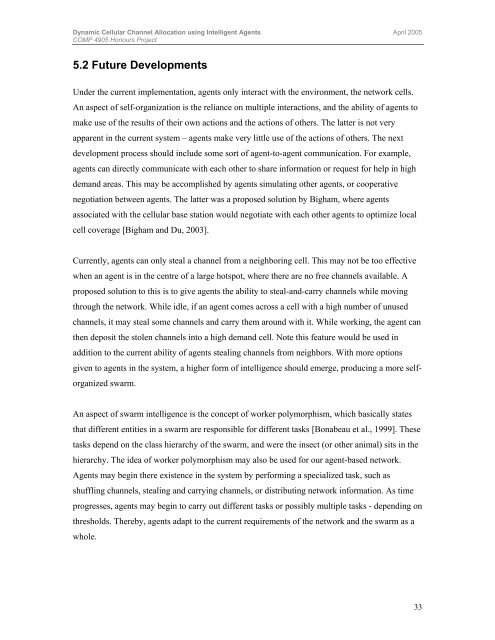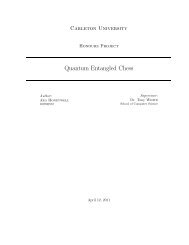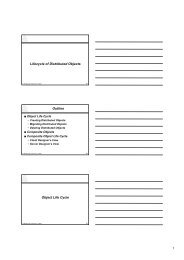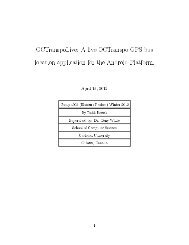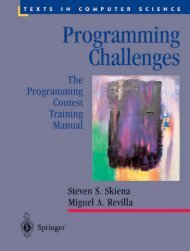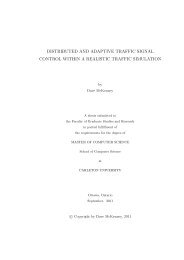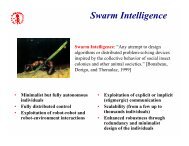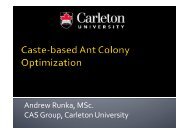Gayan Abeysundara - Complex Adaptive Systems Group
Gayan Abeysundara - Complex Adaptive Systems Group
Gayan Abeysundara - Complex Adaptive Systems Group
You also want an ePaper? Increase the reach of your titles
YUMPU automatically turns print PDFs into web optimized ePapers that Google loves.
Dynamic Cellular Channel Allocation using Intelligent Agents April 2005COMP 4905 Honours Project5.2 Future DevelopmentsUnder the current implementation, agents only interact with the environment, the network cells.An aspect of self-organization is the reliance on multiple interactions, and the ability of agents tomake use of the results of their own actions and the actions of others. The latter is not veryapparent in the current system – agents make very little use of the actions of others. The nextdevelopment process should include some sort of agent-to-agent communication. For example,agents can directly communicate with each other to share information or request for help in highdemand areas. This may be accomplished by agents simulating other agents, or cooperativenegotiation between agents. The latter was a proposed solution by Bigham, where agentsassociated with the cellular base station would negotiate with each other agents to optimize localcell coverage [Bigham and Du, 2003].Currently, agents can only steal a channel from a neighboring cell. This may not be too effectivewhen an agent is in the centre of a large hotspot, where there are no free channels available. Aproposed solution to this is to give agents the ability to steal-and-carry channels while movingthrough the network. While idle, if an agent comes across a cell with a high number of unusedchannels, it may steal some channels and carry them around with it. While working, the agent canthen deposit the stolen channels into a high demand cell. Note this feature would be used inaddition to the current ability of agents stealing channels from neighbors. With more optionsgiven to agents in the system, a higher form of intelligence should emerge, producing a more selforganizedswarm.An aspect of swarm intelligence is the concept of worker polymorphism, which basically statesthat different entities in a swarm are responsible for different tasks [Bonabeau et al., 1999]. Thesetasks depend on the class hierarchy of the swarm, and were the insect (or other animal) sits in thehierarchy. The idea of worker polymorphism may also be used for our agent-based network.Agents may begin there existence in the system by performing a specialized task, such asshuffling channels, stealing and carrying channels, or distributing network information. As timeprogresses, agents may begin to carry out different tasks or possibly multiple tasks - depending onthresholds. Thereby, agents adapt to the current requirements of the network and the swarm as awhole.33


